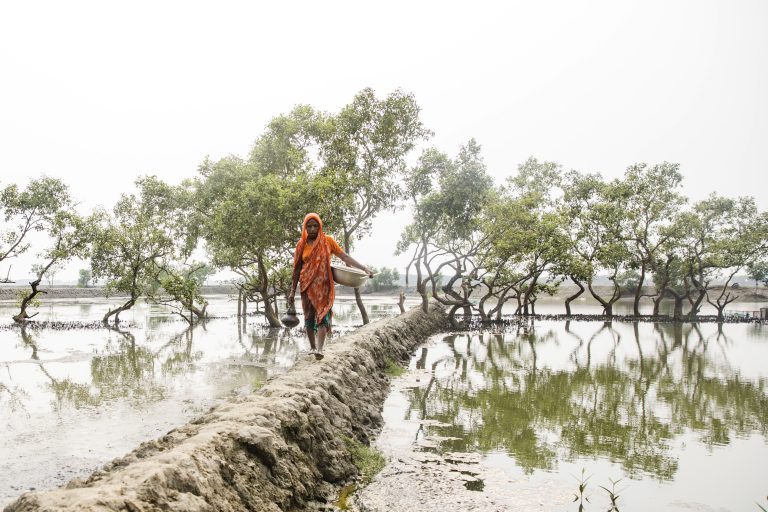
By Jamie Livingstone, Head of Oxfam Scotland and Simon Anderson, International Institute for Environment and Development (IIED)
When it comes to addressing the damage from irreversible climate impacts like sea level rise, the world badly needs frontrunners.
Until now, rich, industrialised nations have blocked meaningful progress.
This has left nations like the Seychelles to warn they are “gasping for survival”.
As the OECD has warned, climate-related losses and damages to livelihoods and well-being risk reversing global development.
The Scottish Government’ Environment Minister Màiri McAllan was therefore right to tell this week’s Climate Vulnerable Forum that climate loss and damage is a “window” through which to see the injustice of climate change.
So, when a nation steps forward to show leadership on this issue, it is important to recognise and shout about it… even better, when it is Scotland which has broken the global deadlock.
The Scottish Government’s new pledge to commit finance to “address loss and damage” makes Scotland the first rich nation to explicitly commit to this type of financing.
It has, rightly, earned plaudits around COP26. Sonam Wangdi, Chair of the Least Developed Countries Group, who travelled to Glasgow from Bhutan, told the global press pack that they’re “very happy” to see this move, which he says “paves the way” for others to follow.
The global Climate Action Network – a coalition representing over 1,500 non-governmental organisations in over 130 countries, awarded Scotland a “Ray of the Day”, an award given to those demonstrating climate leadership.
Of course, given devolved powers, the sums involved in the Scottish Government’s announcement are minuscule in a global sense – just £1 million.
This will do little to compensate for the absence of an international financial mechanism for loss and damage.
Yet this commitment to allocate finance from its Climate Justice Fund to support “communities to repair and rebuild from climate-related events, such as flooding and wildfires” is a very welcome statement of intent.
Up until now the Fund has been focused on supporting a small number of countries in Africa, including Malawi, to adapt and to reduce their emissions.
In global climate lingo, this is often described as “Climate Finance”.
In the run up to COP, the Scottish Government confirmed the Climate Justice Fund will rise from £3m per year to £6m in the coming year.
That’s long overdue after a five-year freeze. Now the Government has pledged that a slice of this rise, when it comes soon, will be devoted to loss and damage.
Full details of how these funding streams will be structured has still to emerge, and the detail really matters too.
As Mr Wangdi stressed, it needs to be very clear that funding for loss and damage is “separate” to other funds.
Positively, the Climate Justice Fund is already separate and additional to Scotland’s International Development and Humanitarian Emergency Funds, both of which are also increasing.
However, the Scottish Government must ensure it designs the Climate Justice Fund in a way that enhances climate vulnerable countries’ demands for other rich countries to deliver new and additional resources; care will be needed.
And the Government should go further still.
The key blockage to progress globally is where the money will come from: after all, rich developed countries are already betraying their promise to low-income countries by failing to mobilise the $100 billion per year they promised in climate finance.
Genuinely new sources of money for loss and damage are therefore needed and the Scottish Government should again lead the way by raising the money for its growing Climate Justice Fund by taxing the high-emitters, and those on high-incomes and wealth whose excessive consumption fuel the climate crisis.
But of course, to deliver climate justice, all countries – and particularly rich, developed countries, like Scotland, who got rich on the back of burning fossil fuels, must also minimise future loss and damage by slashing their emissions in line with their fair share of limiting temperatures to 1.5C.
On this, Scotland’s record is less robust: it has missed three legal emissions targets in a row, a damaging trend that must stop now.
But as Scotland strides forward, COP26 cannot stand still.
It must make loss and damage a permanent agenda item in future negotiations; establish a new finance facility to generate new and additional money; and it should include loss and damage in discussions on a new finance goal for after 2025.
Progress is essential, after all, it’s predicted loss and damage will cost developing countries between $290 – $580bn by 2030.
But progress at COP26 does not appear to reflect this escalating need. The Warsaw International Mechanism Executive Committee for Loss and Damage has reported on the work of its technical groups, including in relation to areas such as: slow onset events, like sea level rise.
And the negotiations on how the Santiago Network – a body established at COP25 to catalyse technical support on loss and damage – have focused on how it will be governed.
Both are important, but progress must accelerate to ensure meaningful text can be included within the high-level statement.
This must ensure the response to loss and damage is flexible, responsive and scale-able in response to growing needs.
If the Covid-19 pandemic has taught us anything, it’s the importance of working in solidarity across borders.
So as COP26 marches forward, it must now emulate the precedent Scotland has set on loss and damage.







